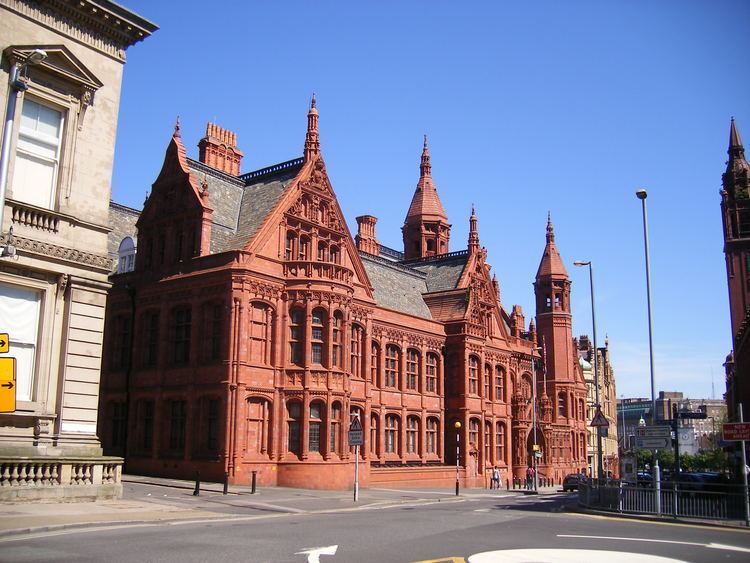Type Magistrates' Court Completed 1891, (+1894, 1914) Reference no. 1075605 Construction started 1887 Designated as world heritage site 21 January 1970 | Architectural style Arts and Crafts Opened 1891 Main contractor John Bowen | |
 | ||
Similar Methodist Central Hall - Birm, The Endwood, Fox Hollies Hall, The Anchorage - Birmingham, St Silas' Church - Lozells | ||
Victoria law courts
The Victoria Law Courts on Corporation Street, Birmingham, England is a Grade I listed red brick and terracotta building that now houses Birmingham Magistrates' Court.
Contents
- Victoria law courts
- Map of Victoria Law Courts 1 Newton St Birmingham B4 7NA UK
- History
- Future
- References
Map of Victoria Law Courts, 1 Newton St, Birmingham B4 7NA, UK
History
Designed by Aston Webb & Ingress Bell of London after an open competition in 1886, assessed by architect Alfred Waterhouse, to provide the first assize courts in the rapidly growing town of Birmingham, it is faced entirely in deep red terracotta from the clay of Ruabon in North Wales and covered in intricate terracotta ornamentation. A statue of Queen Victoria by Harry Bates surmounts the main entrance. Other figures are by sculptor William Silver Frith to designs by Walter Crane. The rear of the building is less elaborately decorated.
The foundation stone was laid by Queen Victoria on 23 March 1887 in her Golden Jubilee year. Built by Birmingham firm, John Bowen and Sons, the courts were opened on 21 July 1891 by Prince & Princess of Wales. Additions were made adding a projecting bow window on the left in 1891-4 and extensions along Newton Street in 1914.
The interior, including the Great Hall, is faced with sandy-yellow terracotta and intricate ornamentation. The terracotta used for the interior was produced by Gibbs and Canning Limited of Tamworth.
The chandeliers in the great hall resemble Queen Victoria’s coronation crown and were the first outside London to be powered by electricity.
Standing at the northern end of the shopping street it is complemented by the similarly coloured Methodist Central Hall, which stands opposite.
The site was previously occupied by Alaska Works and a small school.
Future
It is proposed to move the magistrates' court to a new purpose-built courthouse, nearby. This will render the old building redundant.
